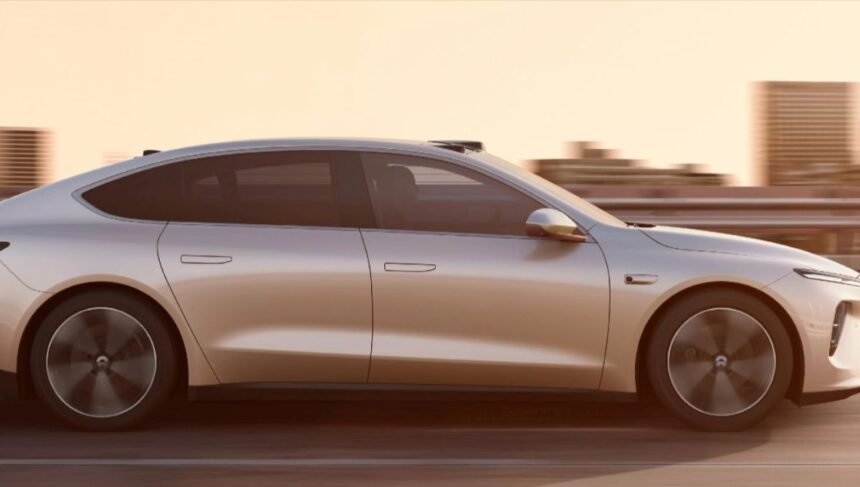With its new 150 kWh semi-solid-state battery pack, Chinese electric vehicle manufacturer Nio has accomplished an incredible range of 1,044 km (648 miles) on a single charge.
This establishes Nio as the manufacturer of the most extended-range electric vehicle on the market, breaking the previous record.
After 14 Grueling Hours, Nio ET7 Sedan Crosses 1,044 km Finish Line with 3% Charge Left
William Li, founder and CEO of Nio, drove an ET7 sedan (fitted with the new 150 kWh battery pack) between Shanghai and Xiamen for more than 14 hours straight on December 17. He covered a total of 1,044 kilometers before concluding the voyage with just 3%, or 36 km, of range remaining.
For 92%, or 957 km, of the journey, Li turned on the ADAS feature Navigate on Pilot Plus (NOP+), which greatly helped to lower energy use. The range test was conducted at an average speed of 84 km/h.
The huge battery pack managed an outstanding 13.2 kWh per 100 km energy usage, even though the winter temperatures in Shanghai averaged -2°C and reached as high as 12°C during the journey. This is proof of the outstanding heat management capability that was built into the pack.
150 kWh Pack Offers Double Cooling of Standard Batteries
According to Nio, the 150 kWh pack’s cooling power is six times greater than that of its standard battery packs. To keep performance at its best, next-generation semi-solid-state chemistry and a huge number of battery cells generate a lot of heat.
Although other automotive companies have introduced ultra-long-range concept cars, Nio will be the first to market with a production version of this technology.
For vehicles designed for mass production, the 150 kWh pack currently offers the best energy density of any battery pack in the world. Using its pioneering battery swapping architecture, Nio has verified that all of its models are flexibly compatible with this pack.
Swap Stations Key to Making 150 kWh Economically Viable
Many in the industry are speculating that Nio’s new battery pack might be nearly as expensive as the ET5 sedan. Owners can avoid paying for the huge pack in advance thanks to Nio’s flexible switch stations.
Daily increases of 100 kWh are already available on Nio for only RMB 50 (about $7). If there was a comparable scheme for the 150 kWh pack, more people could afford the extreme range.
GAC Aion: 1,008 km Range but Minimal Units Delivered
The 1,000+ kilometer range wasn’t achieved by Nio alone. The GAC Aion LX Plus model debuted in late 2021 with a range of 1,008 km, an ultra-long-range variant.
Having said that, the price of the car is almost twice that of the regular version. The 1,000 km pack has failed to live up to its early promise, with GAC Aion failing to deliver on its promises and offering no updates on production capacity or delivery deadlines.
Zeekr’s 1,032 km Range Battery Limited to 1,000 Units
With the help of CATL’s Qilin batteries, the electric sub-brand Zeekr from Geely can travel 1,032 kilometers. Owners of the 1,000 automobiles that Zeekr has approved for this upgrade will spend more than $100,000 more than the base price.
Nio has highlighted the fact that their 150 kWh pack is designed for mass production, in contrast to these extremely premium options.
Nio appears to be well-positioned to expand access to 1,000+ km range, thanks to battery supplier Beijing WeLion’s increased dedicated production lines.
2023 Roadmap Places Spotlight on Revolutionary Battery Tech
The unrelenting advancement in electric vehicle battery technology by Nio is highlighted by their record-setting test.
Along with its next-gen NT 2.0 platform and ultra-fast charging enhancements, Nio’s 2023 technology roadmap includes the 150 kWh semi-solid-state pack.
Despite competition from companies like Xpeng, BYD, and Tesla, Nio is determined to maintain its position as the market leader in innovative battery solutions that expand the boundaries of electric mobility.





